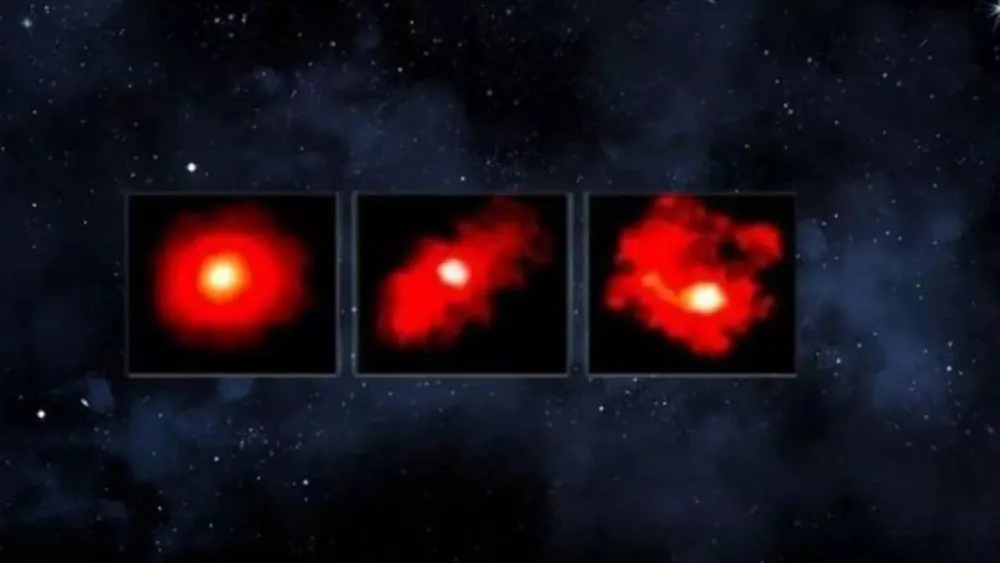

The James Webb Space Telescope has discovered three massive "red monster" galaxies, each about 100 billion times the mass of the Sun, formed just a few hundred million years after the Big Bang. These ancient galaxies, over 12.8 billion years old, challenge existing theories of galaxy formation, as they formed stars at an unprecedented rate, converting 80% of their gas into stars. This discovery suggests that galaxies may have formed much faster than previously thought, prompting a reevaluation of our understanding of early cosmic evolution.


The James Webb Space Telescope has discovered three massive "red monster" galaxies, each about 100 billion times the mass of the Sun, formed just a few hundred million years after the Big Bang. These ancient galaxies, over 12.8 billion years old, challenge existing theories of galaxy formation, as they formed stars at an unprecedented rate, converting 80% of their gas into stars. This discovery suggests that galaxies may have formed much faster than previously thought, prompting a reevaluation of our understanding of early cosmic evolution.
•Each galaxy has a mass of about 100 billion times that of the Sun.
•These galaxies formed just a few hundred million years after the Big Bang.
•They are over 12.8 billion years old, dating back to the "cosmic dawn.".
•The galaxies challenge existing models of galaxy formation.
•They exhibit a high star formation efficiency, converting 80% of their gas into stars.
•This discovery suggests galaxies may have formed faster than previously thought.
•JWST's capabilities are revolutionizing our understanding of the early universe.
Need any assistance with your queries?
Our AI chatbot support is always available to provide answers to any questions but to begin with, here are some of our most asked questions
What are "red monster" galaxies?
Why are these galaxies significant?
How does JWST contribute to our understanding of the universe?








